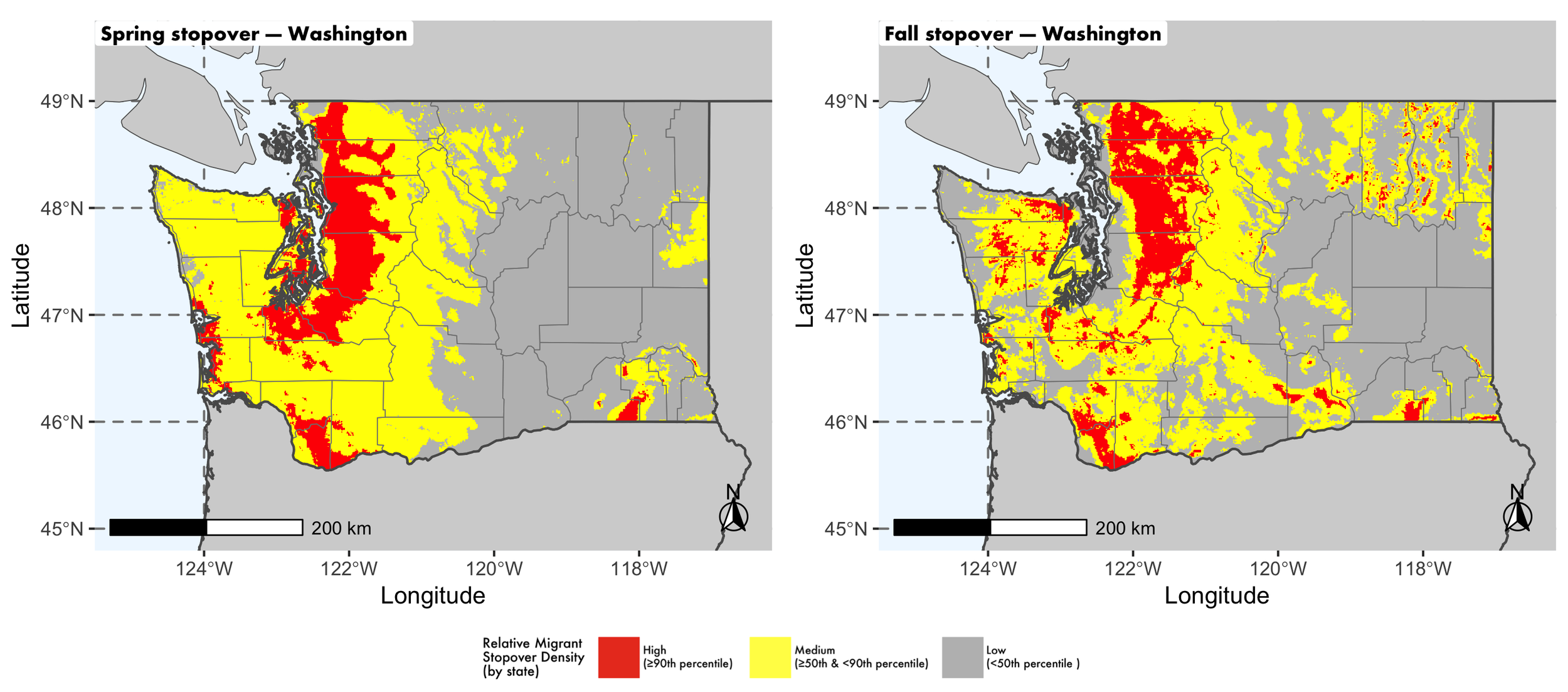Washington: Migration forecast & seasonal timing
When migration peaks statewide and what to do tonight to reduce light risks.
Peak spring ≈ early–late May
Peak fall ≈ late Sep–early Oct
Lights Out guidance
If your city is within its peak migration window tonight, dim or turn off non-essential outdoor lighting from 11 pm–6 am and close shades to reduce skyglow.
Why “Lights Out” helps
- Reduces collision risk by lowering skyglow and attracting fewer birds into lit urban cores.
- Conserves energy and saves money by dimming or switching off non-essential lighting during peak migration.
- Improves habitat quality by keeping nocturnal environments darker for resting birds near stopover hotspots.

While the maps above display nightly migration “alerts,” the maps here highlight state-level stopover hotspots for both spring and fall migration.
- Red areas: Above the 90th percentile of predicted stopover density—places where migrants have historically concentrated to rest and refuel.
- Yellow areas: Between the 50th and 90th percentiles, reflecting moderate stopover use.
- Gray areas: Below the 50th percentile of predicted stopover density.
Seasonal timing by city
Bars rescale to the selected view. Spring = Mar 1–Jun 15; Fall = Aug 1–Nov 15. The vertical line marks today (if within view).
